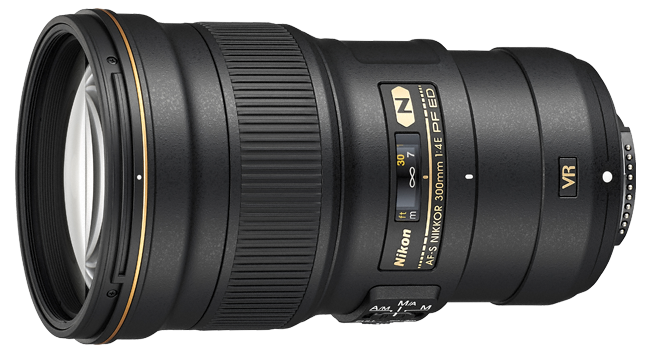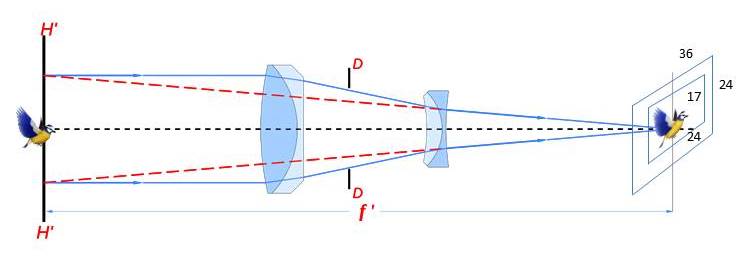Telephotos and Teleconverters – Part 2 of 6 [1, II, III, IV, V, VI]
This post follows my earlier introducing the scope and meaning of the TeleConverter Factor. Both respond to rumours arising after Nikon registered patents for a tripartite of Phase-Fresnel telephoto primes. On paper, or rather in silico, the three primes are: 400 f5.6 PF, 500 f5.6 PF and 600 f5.6 PF. This news set internet forums buzzing during February 2018.
It is plainly obvious my twinned posts – elaborating on the TCF – respond to this welcome trend in lens development. Besides the Canon primes, the 300 f4E PF Nikkor is the inaugural product setting a new benchmark in not only ergonomics but its credible TCF plus excellent IQ, factors that likely explain sales of at least 22 000 units since its release in 2015. The growing plethora of blogs and lens reviews confirm why many photographers buy the light prime 300 f4E PF as a travel lens (more than 22 000 units sold to date apparently). The credible TCF of the 300 f4E PF is often acknowledged – not only with TC14, but also the TC17 and TC2.
The TCF criteria reveal why – as these hypothetical products stand – all three of Nikon’s optical patents are inadequate. As I will reiterate below, the concept of a 400 f5.6 is stillborn for too many photographic genres – especially wildlife; buyers will have to expand finite budgets to get further telephoto reach. The main reason is that a slow f5.6 telephoto pushes the T – Telephoto-Gain – into the negative zone, and the C – Converter-Scope – drops below 3 to a mere 1.

With an Overall Length of 148mm, the 300 f4E PF ED VRII Nikkor weighs only 755g, and takes 72mm filters. Its TCF of T3C0.5 further explains its versatility across several genres of photography
Take a quick look over the Table, below. It summarizes why a f5.6 tele is too limited a prime. The Teleconverter Factors of the fast exotic Nikkors stand out, complementing their excellent IQ with TCs, and the G and E models of Nikon’s 70-200 f2.8 zooms also have credible TCF scores. Note the position in the bottom two rows – winning the worst and 2nd-worst positions – with a respective TCF of T2C-1 and R1P-0.75. One could compile a “TCF-CrapList” from across manufacturers (as in the Canon 400 f5.6).
It is the 300 f4E PF that fixes the proverbial rubicon that a credible lens manufacturer crosses at their peril into the f5.6 Zone. Dropping the T (Telephoto-Gain) of the TCF of a telephoto prime below 3 is inadvisable. Perhaps some punters will buy such a prime for specialized needs and conditions, but fonly where they don’t need to increase its focal length and retain a modicum of AF performance.
Comparisons of TCF
To aid comparisons and cross-reference, here’s the Table of TCFs I proposed introducing the scope and meaning of the TeleConverter Factor.
A summary of some Relevant Prime lenses including potential PF telephotos (attributes estimated). Compare differences in the Potentials to extend the focal length of these lens with the 3 Nikon Teleconverters. The T Score – Telephoto-Gain – of 1, 2 or 3 summarizes whether the lens can work effectively with 1, 2 or 3 of the respective TCs. Range of C – Converter-Scope – values: 5 [f2.8] 4 [f3.3] 3 [f4] 2 [f4.5] 1.5 [f5.6] -0.25 (6.7] and -0.75 [f8]
———————————————————————————————————-
————— Mass (g) —-OL (mm) — TC14 —– TC17 ——– TC20———-TCF
200 f2GVRII—–2900 ——– 204 —– 280 f2.8 —- 340 f3.3 —— 400 f4——T3C12
300 f2.8G VRII —2900 —– 268 —– 420 f4 —- 510 f4.8 —— 600 f5.6——T3C6.5
300 f4 PF ———–755 ——– 148 —– 420 f5.6 —- 510 f6.7 —— 600 f8——T3C0.5
400 f2.8E FL — 3 800 —– 220 —— 560 f4 —– 680 f4.8 —— 800 f5.6—T3C6.5
*400 f3.3 PF FL — ~2 100 —220 —- 560 f4.5 —- 680 f5.6 —- 800 f6.7—T3C2.75
400 f4 PF ——– ~2 000 —- 220 —– 560 f5.6 —– 680 f6.7 —– 800 f8——T3C0.5
400 f5.6 PF FL– ~ 900 — 220 —– 560 f8 —— N/O ——- N/O———T1C-0.75
* 500 f3.3 PF FL—- ~2 900 —- 280 —– 700 f4.5 —– 850 f5.6 —- 1000 f6.7—–T3C2.75
500 f4 PF FL—- ~2 200 —- 280 —– 700 f5.6 —– 850 f6.7 —- 1000 f8—–T3C0.5
500 f4E FL ——- 3 150 —- 380 —— 560 f5.6 —– 680 f6.7 —– 800 f8——T3C0.5
500 f5.6 PF FL– ~2 000 — 280 —– 700 f8 —— N/O ——- N/O———T1C-0.75
600 f5.6 PF FL– ~2 200 — 320 —– 840 f8 ———– N/O ——– N/O——-T1C-0.75
————————————————————————————————————————————-
*The 400 f3.3 PF and 500 f3.3 PF are flagged as the optimum specifications in how they can combine TCF and ergonomics.
Note the above table does not include the sensor cropping factor of 1.5 that confers the ‘DX Performance Envelope’ on the D500 and its kin – with a 24x17mm sensor. This is simple to calculate, but do note it does not change the “optical reach” of any telephoto lens. Magnification is fixed. This is the schematic that dispatches any such myth:

Key Implications of TCF for Lens Design
Lens designers in Japan should be displaying these tabulated specifications in pride of place in their laboratories – the company will win due kudos if they respect the reality that these purchases are dominated by enthusiasts, and also the pro photographers in those burgeoning outdoor genres entailing adventure. But it is the thousands of enthusiasts, who not only operate on a tight fiscal budget, but also suffer under the luggage strictures of ‘cattle-class’ policed by airlines. Only some wealthy flying business class travellers might pack 2 or 3 PF primes, but I very much doubt many photographers will hike with a battery of 3+ telephoto primes – even of the f5.6 PF guild. This where the prime or zoom telephoto, weighing under ~2.5kg, makes sounder sense. And the compact 3 teleconverters (total mass – 200 (TC14) + 250 (TC17 II) + 330 (TC20 III)= 780g) can be carried in even be carried in a pouch or waistcoat where cabin luggage is maxed out.
Instead, my choice will be for the lightest available prime telephoto with a decent TCF. This is where we will hopefully see Sigma bring out their equivalent of a 400 f4 Sport – but weighing under 2kg. But is a 400 f4 the optimum prime? The killer product will be the 400 f3.3 PF prime telephoto – flagged in the Table above. The weights for the optional PF models are obvious estimates – or rather desirable targets optical designers have to acknowledge with reverence. Our little table makes the argument plain – this bundles a +ve luggability factor with decent AF performance conferred by its optimum TCF.
The challenge to Japanese engineers is stark. Get out to market at affordable prices the 400mm f3.3 PF FL and 500mm f3.3 PF FL telephoto primes with their total masses down close to 2kg and 3kg respectively. Meeting the combined challenges of decent TCF [T3C2.75] and ergonomics best integrates an internal teleconverters, each optimized to the optics of the prime!
Phase-Fresnel and fluorite elements together with space-age polymers make it practical to meet these specifications – and not just design but mass-produce such a light-weight compact telephoto of superlative quality. Although its maximum diameter of 122mm is set, fluorite and PF technology can carve down its mass and length. It is obvious why not only enthusiasts will seize a 400 f3.3E PF to travel to their destinations of choice; it will be more than appreciated by professionals prioritizing high mobility and versatility on the move – especially in the Adventure, Sport, Wildlife and other photographic genres.
Summary
Together, the TC factor and high-res sensors on top DSLRs focus the choices open to us, as to where one invests one’s money. The high prices, and gear weight, especially where the jobs-worth terrorizing airline check-in procedures constrain us to seek the Singular Telephoto. But it must hold the capacity for top IQ with TCs to enable still longer focal lengths – to 700mm and 800mm where needed. I confess this need for a lighter tele prime in the guise of the 300 f4 PF has become an enduring quest. Such that I have been in email communication with Sigma, motivating for what I see as obvious gaps in inventories…. I’m reliably informed that these requests reach the Optical Design Division across the desk of their affable CEO – most pleasant feedback.
To reiterate, there has never been a better time to market comparatively light-weight PF tele primes delivering topnotch IQ. Manufacturers of the APS mirrorless systems are responding to the market for affordable, ergonomic telephotos – the Fujifilm 100-400mm f4.5/5.6 for example, but the flexibility of such a lens is capped as it stands – irrelevant to TC expansion. Yes, the pressures on the DSLR systems – Nikon especially – are obvious. A swelling market for affordable telephotos interfaces with the modern state of optical technology to do justice to the remarkably excellent digital cameras. It will keep growing. I see the Teleconverter Factor sitting in the core of this triangle….IQ holds the ace position, obviously. And TC performance cannot degrade IQ by any unacceptable amount. Nevertheless, the TC Factor and Ergonomics of telephotos will increasingly swing purchasing decisions.


